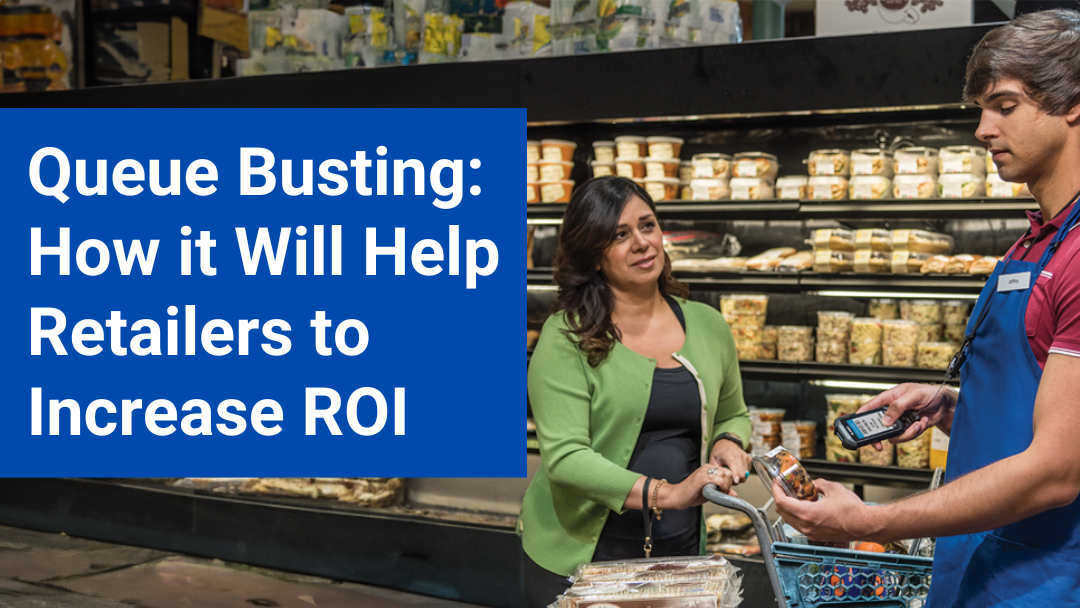What is queue busting?
Queue busting refers to the practice of reducing or eliminating queues, or lines, in retail or service environments, typically by employing various strategies and technologies. The aim is to improve customer satisfaction, reduce wait times, and increase efficiency.
Common queue management issues retailers face:
Retailers often encounter various queue management issues that can negatively impact customer satisfaction and operational efficiency. Some common queue management issues include:
1) Long Wait Times: Lengthy queues and extended wait times can frustrate customers and lead to dissatisfaction, especially during peak hours or busy periods.
2) Inefficient Checkout Processes: Slow or outdated checkout systems, including manual cash registers or outdated POS systems, can contribute to delays and bottlenecks at the checkout counter.
3) Inadequate Staffing: Insufficient staffing levels, particularly during peak hours, can result in understaffed checkout lanes and slower service, exacerbating wait times.
4) Poor Queue Design: Ineffective queue layouts, such as confusing or congested pathways, can lead to customer confusion, congestion, and difficulty navigating through the store.
5) Lack of Queue Visibility: Customers may not be aware of the queueing process or available service points, leading to disorganization and inefficiency.
6) Unpredictable Queue Lengths: Fluctuating queue lengths due to sudden rushes or unexpected events can make it challenging for retailers to allocate resources effectively and maintain optimal service levels.
7) Limited Checkout Options: Offering only a few checkout lanes or failing to utilize alternative checkout methods, such as self-service kiosks or mobile POS systems, can lead to longer wait times and customer dissatisfaction.
8) Poor Staff Training: Inadequately trained staff may struggle to efficiently process transactions or handle customer inquiries, resulting in slower service and increased wait times.
9) Insufficient Technology Integration: Failure to integrate modern queue management technologies, such as virtual queuing systems or mobile apps, can hinder retailers’ ability to streamline the checkout process and meet customer expectations.
10) Lack of Customer Feedback Mechanisms: Without mechanisms in place to gather feedback from customers regarding their queueing experiences, retailers may be unaware of issues affecting customer satisfaction and unable to address them effectively.
Addressing these common queue management issues requires a combination of strategic planning, investment in technology and infrastructure, effective staffing strategies, and a commitment to continuously monitoring and improving the customer experience.
What are queue-busting techniques?
Queue busting techniques are methods employed by businesses to reduce or eliminate queues, thereby improving customer satisfaction and operational efficiency. Here are some common queue busting techniques:
1) Mobile Point-of-Sale (mPOS) Systems: Employees equipped with handheld devices can process transactions anywhere in the store, allowing customers to check out without waiting in line at fixed checkout counters.
2) Self-Service Kiosks: Self-service kiosks enable customers to independently scan and pay for their items, reducing the need for manned checkout lanes and decreasing wait times.
3) Virtual Queuing Systems: Customers can join a virtual queue remotely via mobile apps or online platforms, receiving notifications when it’s their turn for service. This allows them to roam freely until their turn comes up.
4) Appointment Scheduling: Businesses can offer appointment-based services, allowing customers to book specific time slots for assistance or consultations, minimizing wait times and ensuring prompt service.
5) Express Checkout Lanes: Designating express checkout lanes for customers with a limited number of items can help expedite the process for those who only need to make quick purchases.
6) Staff Optimization: Properly staffing and deploying employees during peak hours can ensure that service is prompt and efficient, reducing wait times for customers.
7) Customer Flow Management: Analyzing customer flow patterns and optimizing store layout and signage can help direct traffic efficiently and prevent congestion in high-traffic areas.
8) Contactless Payments: Accepting contactless payment methods such as mobile wallets and NFC-enabled cards can speed up transactions, as they require minimal interaction and are typically faster than traditional payment methods.
9) In-Store Assistance: Providing roaming staff members who can assist customers with inquiries, product recommendations, and checkout processes can help alleviate bottlenecks at fixed service points.
10) Queue Monitoring and Feedback: Implementing systems to monitor queue lengths and wait times allows businesses to identify bottlenecks and make real-time adjustments. Gathering customer feedback also helps in refining queue management strategies.
By implementing these queue busting techniques, businesses can enhance the overall customer experience, increase operational efficiency, and drive customer loyalty and satisfaction.
Why retailers should address the problem of queue busting?
Retailers should address the problem of queue busting for several important reasons:
1) Customer Satisfaction: Long wait times and queues can lead to customer frustration and dissatisfaction. By implementing queue busting techniques to reduce or eliminate queues, retailers can improve the overall shopping experience and enhance customer satisfaction.
2) Competitive Advantage: In today’s competitive retail landscape, providing a seamless and efficient shopping experience is essential for attracting and retaining customers. Retailers that effectively address queue management issues can differentiate themselves from competitors and gain a competitive advantage.
3) Increased Sales and Revenue: Shorter wait times and improved customer service can lead to higher conversion rates and increased sales. When customers have a positive experience at the checkout, they are more likely to make repeat purchases and recommend the retailer to others, ultimately driving revenue growth.
4) Operational Efficiency: Queue-busting techniques can help retailers optimize their operations and improve efficiency. By streamlining the checkout process and reducing wait times, retailers can serve more customers in less time, maximizing throughput and reducing operational costs.
5) Enhanced Brand Reputation: Providing a smooth and hassle-free shopping experience contributes to a positive brand reputation. Retailers that prioritize queue management and customer service are perceived as more customer-centric and reliable, which can strengthen brand loyalty and attract new customers.
6) Adaptation to Changing Consumer Preferences: As consumer preferences evolve, retailers must adapt to meet the demands of modern shoppers. Many consumers today value convenience and efficiency, and retailers that fail to address queue management issues may risk losing customers to competitors that offer a more seamless experience.
7) Utilization of Technology: Queue busting often involves the adoption of modern technology and innovative solutions, such as mobile POS systems, self-checkout kiosks, and virtual queuing platforms. Embracing these technologies not only improves the customer experience but also demonstrates the retailer’s commitment to innovation and staying ahead of market trends.
SUMMING UP
Addressing the problem of queue busting is essential for retailers. Implementing Queue-busting techniques can have a significant impact on a retailer’s bottom line by driving sales, improving customer satisfaction, reducing costs, and enhancing brand reputation.
By investing in queue management strategies and technologies, retailers can achieve a higher ROI and position themselves for long-term success in the competitive retail landscape.

